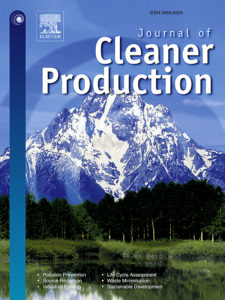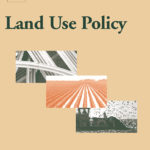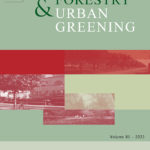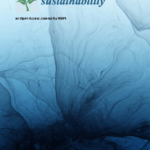

Costs of achieving emission limits in coal-burning power plants under the recent best available techniques regulation amendment: Evidence from national microeconomic data
Paper introduces an innovative approach to the economic assessment of proportionality in meeting emission standards
Emissions limits for coal-burning power plants are gradually being tightened around the world, with additional requirements and consequently significant costs placed on existing power plants. Design that conforms to regulatory requirements require credible estimation of the associated abatement costs. However, the existing methods for estimating abatement costs do not estimate those costs using microeconomic data or take the need to retrofit current abatement technologies into sufficient consideration. Therefore, they fail to calculate the actual costs of compliance accurately and thus are not suitable for assessment of cost proportionality, which is the key principle of regulatory design. This paper introduces a straightforward and innovative methodological approach to quantification of abatement costs that can reflect the real-world situation at an individual power plant and allows assessment of proportionality in meeting emission standards. The approach is based on collection of detailed data at the level of individual plants and on the comparison of costs associated with various levels of emission reduction in defined scenarios. The approach is demonstrated by application to nearly 50% of the installed thermal power capacity of the Czech Republic. The results show that recent European regulations for coal-burning plant emissions incur high abatement costs for most power plants, despite having very little effect in terms of emission reductions.
Reference: Vojáček, O.; Brabec, J.; Macháč, J. (2022). Costs of achieving emission limits in coal-burning power plants under the recent best available techniques regulation amendment: Evidence from national microeconomic data. Journal of Cleaner Production 352. https://doi.org/10.1016/j.jclepro.2022.131600
Balancing the interaction between urban regeneration and flood risk management – A cost benefit approach in Ústí nad Labem
In urban planning CBA can act as a decision support, rather than making, tool identifying gaps that need to be filled.
Urban areas are hot spots of flood risk due to how urban development concentrates people and assets into hazard prone areas, reinforcing negative externalities on the welfare of urban residents. Mitigating flood risk in urban environments, however, is challenging. This is not only because the process generating flood risk is complex, but the objectives of city planners, residents and/or developers are also multi-faceted. Therefore, there are various trade-offs to be considered. One such problem across many areas of Europe and beyond is how to regenerate declined urban areas, to improve the welfare, prosperity, and image of the city. However, in turn, many areas within these cities will see this activity being traded-off against increased flood risk. Cost-benefit analysis represents a useful approach for assessing this trade-off, as a decision-support tool. In this paper we present an exploratory cost-benefit analysis of a potential urban regeneration project within the city of Ústí nad Labem (Czechia) that seeks to highlight the potential magnitude of such trade-offs that need to be more often actively considered as a core, rather than peripheral, element of urban regeneration. We present an exploratory framework that can be expanded upon and integrated into wider regeneration visions.
Reference: Hudson, P.; Raška, P.; Macháč, J.; Slavíková, L. (2022). Balancing the interaction between urban regeneration and flood risk management – A cost benefit approach in Ústí nad Labem. Land Use Policy 120. https://doi.org/10.1016/j.landusepol.2022.106276
Exploring public preferences and preference heterogeneity for green and blue infrastructure in urban green spaces
Which form of green and blue infrastructure elements (nature-based or semi-natural) is preferred by residents of the medium-sized Czech city of Liberec?
Green and blue urban infrastructure (GBI) has many positive functions often not recognised by residents (e.g., microclimate regulation, water retention, etc.). The question for urban planners who are aware of these functions when planning new GBI elements or revitalising existing GBI is how much they need to account for the preference heterogeneity of locals, who typically consider only aesthetic and recreational value. This study uses data from a discrete choice experiment among residents of the medium-sized Czech city of Liberec to reveal which combinations of nature-based or semi-natural GBI and recreational facilities respondents prefer and how strong their preferences are in terms of their willingness to pay. Overall, study respondents preferred nature-based GBI to semi-natural ones. A mixed-latent class model identified two groups of respondents who differ in preferences, trade-offs, and socio-demographic characteristics: (i) mostly older educated women who prefer nature-based elements and enjoy park infrastructure; (ii) mostly less educated men who dislike urban gardens and semi-natural streams and do not value park infrastructure. Based on the results, we recommend that spatial planners and green space managers design and implement more nature-based elements in Liberec, which are in line with the respondents’ preferences.
Reference: Macháč, J.; Brabec, J.; Arnberger, A. (2022). Exploring public preferences and preference heterogeneity for green and blue infrastructure in urban green spaces. Urban Forestry & Urban Greening 75. https://doi.org/10.1016/j.ufug.2022.127695
Serious gaming in flood risk management
How serious gaming can contribute to ongoing discussions concerning the shift to more holistic and governance-based flood resilience perspectives?
Serious gaming is increasingly used to explore important real-world problems and a growing number of serious games are addressing flood-related issues. However, there has been limited synthesis of these attempts and their contributions to the ongoing shift toward a more holistic and governance-based flood resilience perspective in flood risk management (FRM). This international review collates and analyses these attempts in order to develop a knowledge base of serious gaming in the field of FRM. It contains 37 games that were developed with different rationales that include engaging players in the topic of FRM, supporting practice by exploring future options through collaboration, improving communication of FRM, as educational tools, and to collect research data. The gameplay countries and player characteristics, game characteristics, relevance to FRM, game rationales, and collection of data are explored in this paper. Identified serious games provided an unconventional and entertaining approach to engage stakeholders on flood-related issues. The review analysed the serious games in light of the shift toward flood resilience and identified limitations in the documentation of serious games and their potential in understanding the longer-term impacts of gameplay on players. Furthermore, the vast majority of reviewed games were played in a single country and missed out on understanding the cultural production and perspectives of FRM that could support cross-cultural learning and inspiration for future FRM strategies. Overall, the review identified an important role for serious games in the shift toward governance and the adoption of more holistic flood resilience perspectives.
Reference: Forrest, S. A.; Kubíková, M.; Macháč, J. (2022). Serious gaming in flood risk management. WIREs WATER 9(4). https://doi.org/10.1002/wat2.1589
Taxonomy – classification scheme for evaluation of sustainability in agriculture
How to prepare for the implementation of the EU Taxonomy in the agricultural sector in Czechia? Development of decision support tools and regulatory Impact Assessment
A number of sub-instruments are being developed to meet the EU’s environmental goals such as New Green Deal targets or achieving carbon neutrality, etc. One of them is the EU Taxonomy, which is a system for classifying economic activities according to their environmental impacts. The EU Taxonomy aims to encourage private investment in sustainable growth and contribute to a climate neutral economy in a number of different sectors. Agriculture is one of them.
The project will lead to the preparation of a suitable environment for implementation of the expected EU requirements for evaluation of sustainable management in agriculture and forestry, more precisely to the preparation of an evaluation classification scheme (the Taxonomy) for private companies with obligation to perform and publish such evaluation as well as for financial institutions and investors. Based on the analysis of appropriate data (IS RESTEP, other public or private data), LCA, carbon or water footprint methods etc. the project will create a methodology and a set of software tools for entrepreneurs and financial institutions. The part of the project will also lead to a complex material for the Ministry of Agriculture to facilitate the establishment of the whole taxonomy system.
The IEEP team will focus on institutional analysis and impact assessment of the implementation of the EU Taxonomy in the field of agriculture. Therefore, an analysis of potential conflicts and barriers related to the implementation of the sustainable agriculture classification system will be carried out in relation to key actors (MoA, MoE, farmers, credit and insurance providers, investors, etc.) and the overall impacts of the implementation will be evaluated in relation to the resulting draft sustainable agriculture classification system in the form of a document similar to the RIA reports.
| Funding agency: | Ministry of Agriculture of the Czech Republic |
| Duration: | 01/2022–12/2025 |
| Contact person: | Jan Macháč, e-mail: machac@e-academia.eu |
| Researchers: | Jan Macháč, Martin Špaček, Jan Brabec, Eliška Mičová, Lenka Zaňková (Zemková) |
| In cooperation with: | Czech University of Life Science Prague |
Food Provision, Social Interaction or Relaxation: Which Drivers Are Vital to Being a Member of Community Gardens in Czech Cities?
Why are city dwellers paticipating in urban gardeing and what motivates people to became a member of community garden?
Abstract: Urban gardening provides city dwellers with a wide range of benefits. Research dealing with the benefits of community gardens (CG) is often qualitative, focused on their founders’ motivations. The objective of our contemporary quantitative study is to understand why the inhabitants of Czech cities join CGs. The paper answers the research question: “What drivers exist for members’ participation in CGs?” It also deals with how the drivers of CG members differ across CGs’ locations in different urban structures. The data were obtained through an online survey from 28 CGs across Czechia, in both the capital and smaller cities. The importance of the different drivers was examined using statistical analysis and logit models. The research shows that the main motivation for the members is not crop production itself but, rather, the spending of leisure time, social contact and relaxation. Other key drivers include the passing on of experience and knowledge about nature to children, which is found mostly among the members with previous cultivation experience. Based on our results, CGs may contribute to the development of public life and to the improvement of public space; hence, the greater support by local decision makers or spatial planners can be justified.
Citation: Dubová, L., Macháč, J., Vacková, A. (2020). Food Provision, Social Interaction or Relaxation: Which Drivers Are Vital to Being a Member of Community Gardens in Czech Cities?, Sustainability, 12, 9588; doi:10.3390/su12229588
See our recent newsletter here!
Nature-Based Flood Risk Management on Private Land
What are the challenges of natural flood retention measure implementation on private land?
Abstract: Nature-based solutions (NBS) in Flood Risk Management require more—and mostly privately owned—land, and more diverse stakeholder involvement than traditional (grey) engineering approaches. This also implies that there are challenges related to different disciplines. Flood risk management with NBS is an issue not only of technical expertise, but it asks for land-use planning, economics, property rights, sociology, landscape planning, ecology, hydrology, agriculture and other disciplines to cope with the challenges of implementing them. Nature-based FRM is thus an inter- and transdisciplinary endeavor. In the book, cases are presented that develop, demonstrate or deploy innovative systemic and yet locally attuned NBS (i.e., green and blue infrastructure and ecosystem-based management approaches, in rural and urban areas).
Hartmann T., Slavíková L., McCarthy S. (eds) Nature-Based Flood Risk Management on Private Land. Springer, Cham. ISBN: 978-3-030-23841-4
Download: Nature-Based Flood Risk Management on Private Land
Students from around the World Come to Map the Greenery in Ústí nad Labem
From 17th to 21st June, 2019, the Faculty of Social and Economic Studies and the Faculty of Science of J. E. Purkyně University will be organizing the International Summer School on Ecosystem Services. Here, students from around the world will map the greenery in selected parts of Ústí nad Labem.
„This is the first summer school of this type that we are organizing. Admission was opened to all university students in the whole world regardless of area of study. We are very pleased by students’ interest,” comments Dr. Jiří Louda, organizer of the summer school as well as of the project BIDELIN, within which the summer school is being held. He adds, “We selected 23 students from 12 countries – Turkey, Switzerland, Germany, but even from China or Algeria, for example – to participate in the summer school.”
The Summer School on Ecosystem Services should familiarize the students with selected methods of mapping and evaluating ecosystem services as well as practically trying them out in a selected model territory. “The course will not be of only theoretical lectures; we are mainly putting emphasis on practical work,” Dr. Louda says and specifies, “The students will map greenery in selected locations in Ústí nad Labem. After analyzing the acquired data, they will try to design measures for improving the current situation.”
Theoretical instruction will take place at the Department of Geography of the Faculty of Science of J.E.P. University, where students will also work with geographical information systems (GIS).
Besides the Faculties of Social and Economic Studies and of Science at UJEP, the Leibniz-Institut für ökologische Raumentwicklung in Dresden and Anhalt University of Applied Sciences in Bernburg are also participating in the organization.
“The cooperation with co-organizers is no coincidence. We have been organizing a bilateral Czech-German course focused on similar themes with both institutions for 6 years. The course, which is held in the winter semester, is only open to students of UJEP and from Germany, however,” clarifies Dr. Louda. “The current summer school is open to absolutely everyone.”
Download the summer school flyer here.
Contact:
Dr. Jiri Louda
louda@ieep.cz
Ecosystem services student course


The 6th year student course about Values of ecosystem services, biodiversity and green-blue infrastructure in cities focuses on exemplary parts of the city of Decin – Marianska louka, Kvadrberk – at this time. Course took place on the second week of October at Jan Evangelista Purkyne University in Usti nad Labem (UJEP). The IEEP with Liebniz Institute of Ecological Urban and Regional Developmnet organise this bilateral course for Czech and German student. This 3-day course allows participants to test methods of mapping green-blue infrastructure. The goal of this mapping is to evaluate ecosystem services of selected locations. Ecosystem services are the direct and indirect contributions of ecosystems to human well-being.
Each Czech-German group of students will work on a joint project over the next few months. They will use the acquired methods to evaluate green-blue areas in Decin. Interim results will be presented in November 2018 at Dresden meeting in IÖR (Dresden). The course is organised as a part of BIDELIN project. Looking forward to a second meeting!








